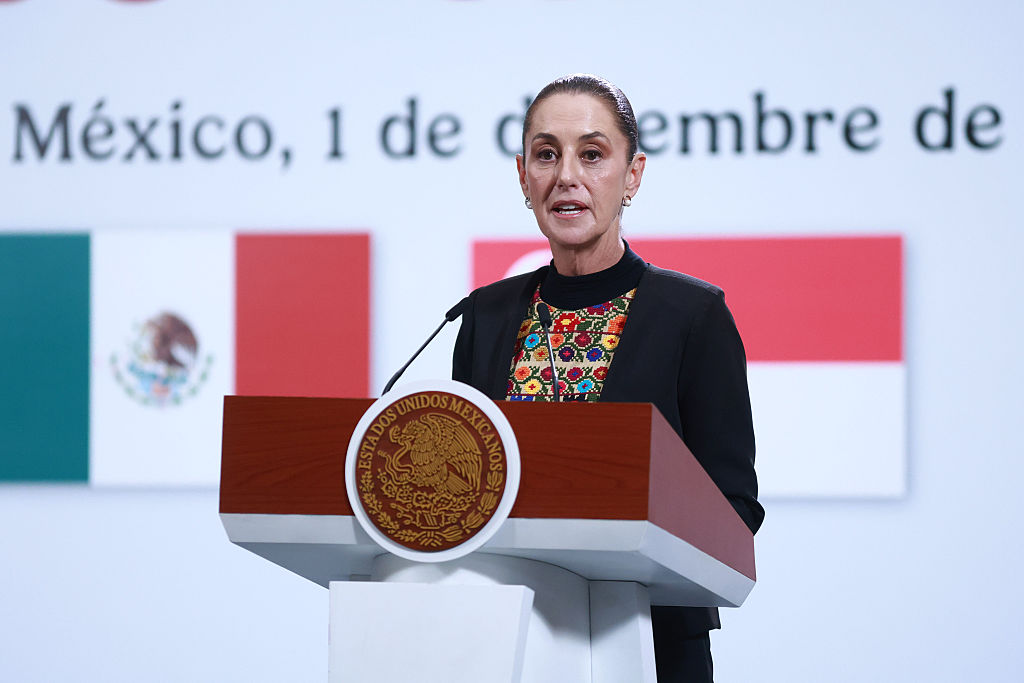Attracting Investment through Intellectual Property Rights
Attracting Investment through Intellectual Property Rights
An AS/COA program launched a new report by Fundacion IDEA on intellectual property rights protection in Mexico. Panelists discussed the larger linkages between IPR and innovation.
Discussants:
- Alberto Saracho Martínez, Executive Director, Fundación IDEA; Co-Author, IPR Protection: A Motor for Mexican Competitiveness
- Maria Strong, Of Counsel, Greenberg Traurig LLP
- Gabriel Kleiman, IP Regional Counsel for Latin America and Canada, Pfizer Inc.
- Jason Marczak, Director of Policy, Americas Society and Council of the Americas
- Christopher Sabatini, Senior Director of Policy, Americas Society and Council of the Americas; Editor-in-Chief, Americas Quarterly (Moderator)
Summary
A panel of experts on intellectual property rights (IPR) discussed the findings of a new report from the Mexican think tank Fundación IDEA and the larger linkages between IPR and innovation. The report, entitled IPR Protection: A Motor for Mexican Competitiveness, explores the degree to which strong intellectual property rights protections can help Mexico fuel innovation at home while attracting higher levels of foreign direct investment. The discussion focused mainly on the potential benefits of IPR protections, as well as steps that should be taken to enhance Mexico’s policies.
IPR and Mexican Competitiveness
According to Alberto Saracho of Fundación IDEA, few prior studies have been completed on how Mexico’s intellectual property rights laws can be used to increase its competitiveness in the global economy. In his opening remarks, Mr. Saracho highlighted several areas where weak IPR protections are undermining Mexican competitiveness.
One such area is Mexico’s seemingly limited capacity to attract “high quality” foreign direct investment, which not only creates jobs and brings in capital, but also results in a transfer of technology or knowledge from the investor to the Mexican economy.
Another is Mexico’s lack of homegrown investment in research and development, which is at half the level per-capita that it is in Brazil or Chile. Moreover, Saracho shared how firms in Mexico “see patents as the realm of the transnational corporation. There is a lack of faith in IPR protections, so businesses don’t invest in it.”
Room for Improvement
Over the course of the last few decades, there have been some significant improvements in Mexico’s IPR protection laws. Each of the panelists cited Mexico’s official acceptance of the World Trade Organization’s agreement on Trade-Related Aspects of Intellectual Property Rights, or TRIPS, as a step in the right direction. However, according to Maria Strong, TRIPS represents a bare minimum level of security for most firms to enter new markets. In her view, Mexico needs to take a three-pronged approach to IPR protection, which consists of legal reforms, increased enforcement and expanded public awareness.
Seventy percent of jobs in Mexico are generated by small and medium-size businesses, which are of crucial importance to any discussion on IPR. The lack of faith in IPR protections on the part of many of these enterprises, coupled with an overly burdensome regulatory framework and public disregard for existing IPR laws is preventing such firms from reaping the potential benefits of investing in innovation. Jason Marczak addressed this issue noting that enhanced partnerships between government and small businesses and between academia and business can boost investments in intellectual property and help create jobs.
On the side of private sector transnational players, there appears to be a willingness to promote IPR reforms in countries like Mexico, while at the same time recognizing the need to expand access to IPR-protected products. Gabriel Kleiman expressed Pfizer’s support of innovation in developing countries and desire to make its products available to broader populations. However, the company also cannot take the significant financial risk involved in developing new drugs without a guarantee of intellectual property rights protections.
Conclusions
At present upward of 90 percent of revenues generated by intellectual property rights and high technology products flow to the world’s most developed economies. As a result, the developed world has a head start in terms of technological innovation, and developing countries seem to lack incentives to adhere to IPR protections and invest in innovative industries.
In Mexico, however, it appears there is the political will to strengthen IPR enforcement and the obligation to do so under the terms of bilateral, as well as regional free-trade agreements. If the government takes the lead in terms of reforms, small and medium-size business may one day increase spending in innovative sectors, eventually leading to greater enforcement and public awareness.
To speed up this process, and to help “bridge the innovation gap” between the developing and developed worlds, there is a need for new business models and enhanced collaboration between intellectual property intensive sectors and firms.







